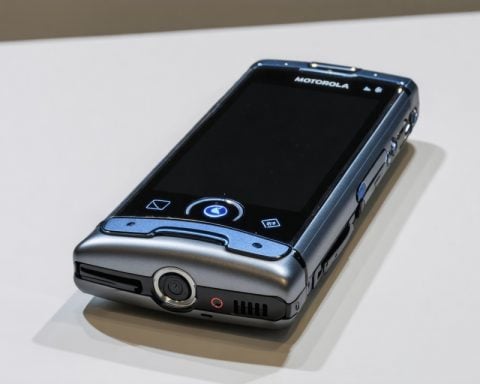- In the Democratic Republic of Congo, over 3,000 fatalities occurred in two weeks due to conflicts over control of mineral-rich areas.
- The Alliance Fleuve Congo (AFC) and M23 armed group have captured key towns, including Nyabibwe, underscoring the battle for valuable resources.
- Congo’s reserves of cobalt and coltan, essential for electronics, are central to the conflict yet fail to benefit its impoverished population.
- Global demand for these minerals fuels ongoing violence, providing funds for warfare through control over mining territories.
- Allegations against Rwanda for supporting M23 and exploiting Congolese minerals complicate the regional political landscape.
- The situation raises questions about the ethical costs of modern technology reliant on these contested resources.
Amidst the verdant hills and mineral-rich earth of the Democratic Republic of Congo (DRC), a brutal conflict rages on, leaving more than 3,000 people dead in under a fortnight. The rebel coalition known as the Alliance Fleuve Congo (AFC), alongside the notorious M23 armed group, recently seized the resource-abundant town of Nyabibwe following the fall of Goma, a key provincial capital in late January. These skirmishes underscore a relentless fight for the control of valuable minerals essential to modern technology.
Congo’s soil, deep and rich, holds the largest global reserves of cobalt and coltan. These minerals are the lifeblood of electronic devices, powering the batteries in our smartphones and electric vehicles. Yet, in one of the world’s poorest nations, the DRC’s wealth rarely reaches its own people. Instead, the mineral bounty is split between a beleaguered government and armed factions, fueling a relentless cycle of conflict.
The thirst for these resources is no accident. Analysts suggest that the insatiable global demand for cobalt and coltan fans the flames of this crisis, as control over mining areas provides the necessary funds for warfare. The shadowy trade of coltan from Rubaya, a significant mining center, allegedly brings in substantial revenue for M23, although the group disputes these claims, citing humanitarian motives.
Accusations against neighboring Rwanda add another layer of complexity. Alleged to back M23 and profit from Congolese minerals, Rwanda faces scrutiny over its soaring mineral exports. This political tangle allows significant quantities of coltan to slip through borders, reaching international markets via winding routes.
As the international community searches for solutions, a fundamental question reverberates: What price are we willing to pay for our tech-driven lives?
The Hidden Costs of Our Tech Gadgets: A Dive into Congo’s Mineral Conflict
How-To Steps & Life Hacks: Ethical Tech Consumption
1. Research Products: Before purchasing electronic devices, investigate brands that prioritize ethically sourced minerals. Look for certifications like the Conflict-Free Smelter Program or initiatives by Responsible Minerals Initiative.
2. Buy Less, Choose Wisely: Adopt a minimalist approach to tech gadgets. Focus on quality over quantity, purchasing durable devices that won’t need frequent replacement.
3. Recycle and Reuse: Opt for recycling programs and trade-in offers that ensure the proper disposal of electronics, minimizing the demand for new raw materials.
Real-World Use Cases: Cobalt and Coltan in Modern Technology
These minerals are critical components in:
– Smartphones: Cobalt is crucial for lithium-ion batteries, providing longer battery life. Coltan, meanwhile, is essential for capacitors, optimizing energy storage.
– Electric Vehicles (EVs): The push for sustainability in the automotive industry heavily relies on cobalt-infused batteries, enhancing vehicle range and efficiency.
– Aerospace and Medical Devices: Both industries benefit from these minerals for high-performance capacitors and robust alloys used in aircraft engines and medical implants.
Market Forecasts & Industry Trends
The demand for cobalt and coltan is expected to grow as the electric vehicle market and connectivity devices expand. According to Statista, the global cobalt market is projected to increase by 5% annually and is expected to reach $23 billion by 2030.
Reviews & Comparisons
Ethical tech brands like Fairphone and Apple have taken strides toward responsible sourcing. Fairphone leads with transparent supply chains, while Apple reports significantly reducing their reliance on newly mined minerals.
Controversies & Limitations
The intersection of conflict minerals and tech presents ethical dilemmas:
– Supply Chain Transparency: Limited visibility into supply chains makes it difficult for companies to ensure conflict-free sourcing.
– Ethical Sourcing Proposals: While proposals for blockchain solutions in traceability exist, implementation remains nascent due to integration costs and logistical challenges.
Features, Specs & Pricing
Tech companies equipped with sustainably sourced minerals may charge premium prices due to the higher cost of ensuring ethical supply chains. However, this usually accompanies quality and durability.
Security & Sustainability
A push for robust, transparent sourcing practices is seen through industry initiatives designed to secure supply while promoting sustainability and ethical labor practices.
Insights & Predictions
– Increased Regulation: Expect enhanced international regulations that compel companies towards conflict-free and ethical sourcing.
– Advancements in Alternatives: Research into mineral alternatives like nickel and manganese could help alleviate pressures on cobalt demand.
Tutorials & Compatibility
Tutorials may emerge on recycling and extending the lifespan of tech devices to reduce reliance on new mineral extractions.
Pros & Cons Overview
Pros:
– Technology accessibility and advancements.
– Enriched automotive and aerospace industry capabilities.
Cons:
– Ethical and humanitarian concerns.
– Environmental degradation and conflict escalation.
Actionable Recommendations
– Support brands dedicated to ethical practices.
– Advocate for clearer mineral sourcing on consumer electronics.
– Participate in recycling programs.
For more on similar topics, explore Greenpeace.
In conclusion, as global citizens, recognizing the hidden costs associated with our technological advancements is critical. Through conscientious consumer habits and advocacy for transparency and sustainability, we can contribute to alleviating some of these challenges associated with mineral conflicts.
















